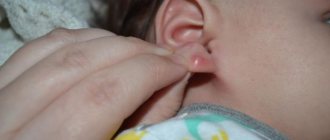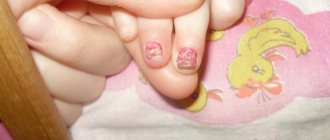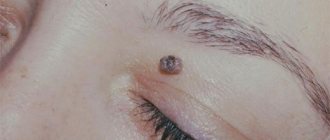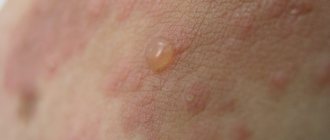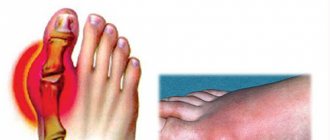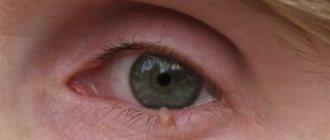( 1 ratings, average: 5.00 out of 5)
Home » Problems 18+
Wart-like growths on the skin are called papillomas, and they can develop anywhere on the body. Why papillomas appear on and around the anus, why the growths are dangerous and what treatment is necessary.
Causes of papillomas
Papillomas on the butt are the result of infection with the human papillomavirus. Science has more than a hundred varieties of HPV, 11 of which are highly oncogenic.
Ways of infection with the virus:
- during pregnancy if the placenta is damaged;
- papillomas in the vagina;
- papillomas on the penis;
- during childbirth;
- during sexual intercourse;
- papillomas on the labia in women;
- when using personal items of the carrier;
- in clinics and nail salons.
Most often, infection occurs during sexual intercourse, so doctors strongly recommend the use of protective equipment. Carriage is not always accompanied by severe symptoms, so a person may not know about his illness for decades.
Causes of anal herpes
photo anal herpes
The cause of anal herpes is the herpes simplex virus type 1 or 2, infection of which occurs during sexual contact with a carrier or patient.
The virus is released in saliva, vaginal secretions, and semen, but the largest number of viral particles are found on the surface of the ulcers and in the contents of the vesicles. Any type of sexual contact with an HSV excretor will lead to infection.
The anus area is vulnerable to herpes infection . For the virus to penetrate the epithelial cells of the mucous membrane, no damage is required compared to the epithelium of the skin.
HSV easily penetrates the mucous membrane near the anus, whereas the skin must be damaged for invasion.
The extent of herpes damage to the rectal area depends on the volume of penetration of biological fluid containing the virus.
If the virus gets on the skin of the anus, the symptoms of the disease will appear only in relation to the sphincter.
After anal sexual intercourse, HSV affects the mucous membrane of the ampulla of the rectum, in which case the signs of infection will be similar to proctitis - inflammation of the lower intestine.
Sometimes infection occurs through contact or household means. In such cases, the cause of the disease is the transfer of the virus from the surface of the rash on other parts of the body to the anus.
Viruses can also enter the anus when using contaminated towels, washcloths, razors and other personal hygiene items.
However, the domestic mechanism of infection is rarely realized. The virus is unstable in the environment and cannot exist without a human cell for a long time.
After the first contact with the virus, the pathogen remains in the spinal nerves for life, periodically leading to exacerbations.
Men and women are affected equally, and infection occurs during the period of maximum sexual activity. Higher incidence rates are observed in homosexuals.
Kinds
Three types of neoplasms accompanying HPV are more common. Below is a brief description of each type.
- Simple warts are round-shaped formations protruding 3-5 mm above the surface of the skin. Not painful. Localization – feet, hands. It is extremely rare to form near the anus.
- Flat warts are oval or round-shaped formations that rise above the skin level by a maximum of 2 mm. They differ in color from the skin due to the large amount of melanin. Appear on the face, arms, legs and other parts of the body.
- Condyloma is a pointed growth near the anus and in the genital area. The outgrowths on a thin stalk do not have clear outlines. Their surface is rough - reminiscent of cauliflower in appearance.
Every person can visually identify the variety by comparing the formation with a photo or description on the Internet. But this is not enough - to make a diagnosis and calculate the degree of risk of malignant degeneration, you need to determine the type of virus.
Diagnostics
A diagnosis can be made long before the first external signs appear. If skin growths have already formed, diagnosis consists not only of determining the presence of the virus, but also of determining its type.
The following diagnostic methods are used to detect the virus:
- visual inspection;
- screening;
- scraping;
- PCR test.
Detection of the virus in the early stages allows you to select an effective set of therapeutic measures. This is necessary to block the development of the disease and turning into a malignant form.
Features of the course of the disease in children
Papilloma on a child’s bottom is also viral in nature, so it is necessary to analyze the type of infection. If detected, it is necessary to undergo diagnostics. Diagnostic measures when a disease is detected in a child are no different.
If a type of virus with a high oncogenic risk is detected in the blood, regular preventive examinations with an oncologist are indicated.
The acute course of HPV in children is observed more often than in adults. Symptomatic treatment with the use of antiviral therapy and drugs to stimulate the immune system is indicated. Rarely, the disease takes a generalized form in patients with congenital or acquired immunodeficiency.
Treatment
The treatment regimen for children and adults is the same. Conservative treatment consists of the use of pharmaceutical drugs.
The complex includes the following medicines:
- Antiviral drugs (Viferon suppositories, Panavir).
- Immune stimulants.
- Ointments and creams for local use.
How to treat HPV in each individual case is decided by the doctor, based on the individual characteristics of the body. An already formed papilloma near the anus will not disappear with drug therapy, but it will prevent the formation of new growths and stop the development of the virus.
Forecasts
The incurability of HPV is a common misconception. Today medicine knows how to get rid of papillomas in the genital area and reverse the consequences of infection. According to statistics, up to 60% of patients are completely cured, often even without taking medications. This form of the disease is called transit.
In other cases, HPV becomes chronic. Most types of HPV do not affect a person's life expectancy. The following types of HPV are recognized as the most dangerous: 16, 18, 36, 45. Infection with a virus of these types leads to the development of malignant neoplasms in the tissues of the reproductive organs and on the skin.
HSV rash symptoms
photo relapse of genital herpes
Herpes of the anus tends to be chronic and relapsing. The skin of the anus, the mucous membrane of the anus and sphincter, and the ampulla of the rectum are affected.
The cause of exacerbation of viral infection is decreased immunity, trauma, intestinal diseases, and dysbacteriosis. Herpes on the anus in women often worsens before menstruation.
Symptoms:
- the appearance of pain in the anus with irradiation to the buttock, thigh, lower back, which intensifies in a sitting position;
- pain during defecation;
- a feeling of heaviness, distension, pressure in the rectum before the appearance of herpetic blisters;
- the appearance of an area of swelling and redness in the skin of the anus;
- itching in the anus;
- the appearance of blisters on the skin in the anus;
- opening of the vesicles and the formation of painful ulcers.
Anal herpes is one of the most painful forms of genital herpes infection.
Herpes on the anus is characterized by prolonged healing and frequent formation of anal fissure.
Constant irritation of the area with herpes with feces and bacterial contamination of ulcers leads to prolongation of tissue regeneration.
Single ulcers localized on the skin near the anus usually heal within a week if you follow your doctor's recommendations.
Multiple herpetic erosions of the rectal sphincter and intestinal lesions take several weeks to heal.
Quite often, anal herpes occurs in an abortive form, with minor symptoms.
A painful papule appears in the anus area; no blisters form. Spontaneous healing occurs after 4-5 days. The disease is most often accompanied by the appearance of rashes on the genitals.
Herpes of the rectal ampulla is often complicated by proctitis. Symptoms of herpes in the intestines are manifested by pain during defecation, false and frequent urge to defecate, a feeling of heaviness in the rectum, fever, chills, the appearance of blood in the stool, and enlarged regional lymph nodes.
The consequences of another relapse of anal herpes can manifest itself in the formation of an acute fissure - a defect in the sphincter mucosa.
Chronic anal fissure, which is a consequence of recurrent herpes, is manifested by severe pain during bowel movements and bleeding (streaks in the stool). A chronic crack does not heal within a month.
Removal of papillomas
Papillomas in the anus and genital area do not resolve on their own - removal is necessary. Neoplasms can be eliminated using techniques, a comparison of which is presented in the table.
| Name of the technique: | Description: |
| Cryodestruction | Freezing growths with liquid nitrogen. |
| Laser removal | Point impact with a laser beam. Painless and non-traumatic method |
| Radio wave surgery | Exposure to radio waves on the growth in order to eliminate intracellular fluid. After the procedure, condylomas in the anus and anal fold dry out and are easily separated from the skin. |
| Electrocoagulation | Cauterization of growths by exposure to high-frequency electrical impulses. |
| Chemical cauterization | The growth is cauterized using acid-containing preparations. As a result of the burn, the formation disappears, but there is a risk of new growths developing. |
Methods for removing outgrowths have contraindications - temporary and categorical. Severe vascular diseases and oncology are categorical contraindications. Temporary contraindications – pregnancy, breastfeeding, acute stages of infectious diseases.
! None of the methods guarantees that new growths will not form in the area of influence over time. To eliminate the risk of relapse, it is necessary to combine removal with pharmacotherapy.
Causes for concern
If a lump is accidentally detected in the anus, there are no other complaints from the patient and indications of possible causes, initial independent observation is allowed. Over the course of one to two weeks, it is necessary to eliminate all situations associated with stagnation of blood in the pelvis:
- make nutritional adjustments - exclude hot, spicy foods, coffee, alcohol, fatty foods, fast food;
- normalize stool - avoid constipation or diarrhea;
- avoid heavy lifting;
- increase physical activity during sedentary work;
- Do not wear tight clothing or chafing synthetic underwear.
If a ball appears near the anus, you should consult a proctologist
If the measures taken are enough for the lump to shrink or disappear, then this lifestyle should be made the norm. Most often this situation happens with hemorrhoids. If there is no effect from the work performed or if the condition worsens, you should immediately consult a doctor for examination, to find out the cause, and to choose treatment tactics.
The ball near the anus should cause concern; it is large in size, complicates the process of bowel movement, causes pain and inconvenience when walking or sitting, and bleeds.
These are usually more serious situations than hemorrhoids. The presence of accompanying symptoms also gives reason to contact a specialist as soon as possible.

